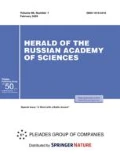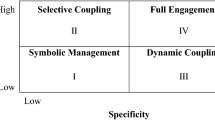Abstract
The concept of “strategic stability” was formally defined in the 1990 Joint Statement by Russia and the United States as “the state of strategic relations between the parties that removes incentives for a first nuclear strike.” This understanding was reflected in the START I Treaty and five subsequent treaties, including the current START III Treaty (2010). Thanks to them, according to the criteria of strategic stability adopted at that time, the current strategic balance between Russia and the United States is much more stable and excludes the possibility and incentives for a first nuclear strike. Nevertheless, strategic stability is now dangerously undermined by the collapse of nuclear weapons control regimes, changes in the nuclear world order, and under the influence of military-technical development. The arguments in favor of abolishing the arms control system and process, as well as the proposed alternatives to them, do not stand up to scrutiny. At the same time, it is clear that 30 years after the 1990 Joint Statement by Russia and the United States, the concept of strategic stability requires updating in the light of changed conditions and new threats. This updated understanding of strategic stability should be the basis for further arms limitation negotiations. At the same time, negotiations with the United States should be based on a solid foundation as an effective Russian deterrent potential with an emphasis on increasing the survivability and combat readiness of information and control systems, as well as offensive and defensive weapons systems.




Similar content being viewed by others
Change history
02 November 2021
An Erratum to this paper has been published: https://doi.org/10.1134/S1019331621050105
Notes
This analysis was carried out with account for the data of one of the studies of the RAND Corporation of the US Air Force (D. Wilkening, “Strategic Stability between the United States and Russia,” in Challenges in U.S. National Security Policy: A Festschrift Honoring Edward L. (Ted) Warner, Ed. by D. Ochmanek and M. Sulmeyer (RAND, Washington, 2014), pp. 123–140. http://www.rand.org/content/dam/rand/pubs/corporate_pubs/CP700/CP765/RAND_CP765.pdf.
In addition to the NPT, several nuclear test ban treaties have been signed since 1963, culminating in the Comprehensive Nuclear Test Ban Treaty (CTBT) of 1996. A number of multilateral treaties were concluded prohibiting the deployment of nuclear weapons and other types of weapons of mass destruction (WMD) in different environments: the 1967 Outer Space Treaty, the 1971 Seabed and Oceans Treaty, treaties on eight geographic zones free of nuclear weapons.
Note that Britain and France have also significantly reduced their nuclear arsenals unilaterally but now Britain will build up again.
The history of nuclear disarmament knows only a few special exceptions to this rule. In 1992, South Africa renounced nuclear weapons in the face of the coming to power of the black majority. In the same years, Ukraine, Belarus, and Kazakhstan agreed to withdraw the nuclear weapons of the former Soviet Union from their territory under strong pressure from Russia and the West and as a condition for foreign recognition and guarantees of their state independence, sovereignty, and territorial integrity.
Of these, only Great Britain and France openly publish information about their nuclear forces.
The first such attempt was made within the SALT-1 Treaty of 1972, then at the SALT-2 negotiations in the late 1970s and in the 1987 INF Treaty.
We are speaking about sea-based cruise missiles (SLCMs) of the Tomahawk type on ships and multipurpose submarines.
Due to the mobility of fleets, China would demand a global restriction of US missiles, and control would be difficult since on ships such missiles are placed in Mk-41 launchers along with missile/air-defense missiles, and on submarines they can be launched from torpedo tubes.
REFERENCES
Joint Statement on Future Negotiations on Nuclear and Space Arms and Further Strengthening Strategic Stability. State Visit of the President of the USSR M.S. Gorbachev to the United States of America, May 30–June 4, 1990. Documents and Materials (Politizdat, Moscow, 1990), pp. 197–199 [in Russian]; Soviet–United States Joint Statement on Future Negotiations on Nuclear and Space Arms and Further Enhancing Strategic Stability. June 1, 1990. https://bush41library.tamu.edu/archives/public-papers/1938.
V. Dvorkin, “Reduction of offensive weapons,” in Polycentric Nuclear World: Political Encyclopedia, Ed. by A. Arbatov and V. Dvorkin (Mosk. Tsentr Karnegi, Moscow, 2017), pp. 67–68 [in Russian].
http://www.kremlin.ru/events/president/news/64261.
https://undocs.org/NPT/CONF.2020/PC.II/WP.30. Cited January 25, 2019; http://statements.unmeetings.org/media2/18559222/france-newl.pdf. Cited February 25, 2019; S. Karaganov and D. Suslov, New understanding and ways to strengthen multilateral strategic stability: Report. http://svop.ru/wp-content/uploads/2019/09/REPORT_Rus_1.pdf.
http://archive.premier.gov.ru/events/news/18248/.
http://kremlin.ru/events/president/news/61451.
Post-Cold War Nuclear Weapons, Ed. by A. Arbatov and V. Dvorkin (Mosk. Tsentr Karnegi, Moscow, 2008) [in Russian].
SIPRI Yearbook 2019: World Armaments, Disarmament and International Security (Oxford Univ. Press, Oxford, 2019).
A. Arbatov, “China and arms control: Not a utopia, but a reality,” Polis. Polit. Stud., No. 4, 36–54 (2020). https://doi.org/10.17976/jpps/2020.04.04
S. Ketonov, “Bypassed on hypersound,” Voen.-Prom. Kur’er, No. 35, 9 (2019).
S. Pifer, “The death of the INF treaty has given birth to new missile possibilities,” National Interest, Sep. 18 (2019), pp. 1–7.
J. M. Acton, Silver Bullet? Asking the Right Questions about Conventional Prompt Global Strike (Carnegie Endowment for International Peace, Washington, 2013), pp. 33–62.
http://kremlin.ru/events/president/news/58848.
On the Fundamentals of the State Policy of the Russian Federation in the Field of Nuclear Weapons. Decree of the President of the Russian Federation No. 355, June 2, 2020. http://publication.pravo.gov.ru/Document/View/0001202006020040?index=2&rangeSize=1.
“Challenges of the development of the Armed Forces of the Russian Federation,” Krasnaya Zvezda, Oct. 11 (2003). http://old.redstar.ru/2003/10/11_10/3_01.html. Cited February 2, 2018.
https://media.defense.gov/2018/Feb/02/2001872886/-1/-1/1/2018-NUCLEAR-POSTURE-REVIEW-FINAL-REPORT.PDF. Cited March 1, 2018.
A. Arbatov, “Elusive matter (preventing an arms race in outer space),” Mir. Ekon. Mezhdunar. Otn. 63 (1), 5–17 (2019).
Funding
This article was published within the project “The Postcrisis World Order: Challenges and Technologies, Competition, and Cooperation” under a grant from the Ministry of Science and Higher Education of the Russian Federation for implementing major research projects in priority areas of scientific and technological development.
Author information
Authors and Affiliations
Corresponding author
Additional information
Translated by B. Alekseev
RAS Academician Aleksei Georgievich Arbatov is Head of the Center for International Security, IMEMO RAS.
Rights and permissions
About this article
Cite this article
Arbatov, A.G. Global Stability in the Nuclear World. Her. Russ. Acad. Sci. 91, 364–373 (2021). https://doi.org/10.1134/S1019331621030023
Received:
Revised:
Accepted:
Published:
Issue Date:
DOI: https://doi.org/10.1134/S1019331621030023




